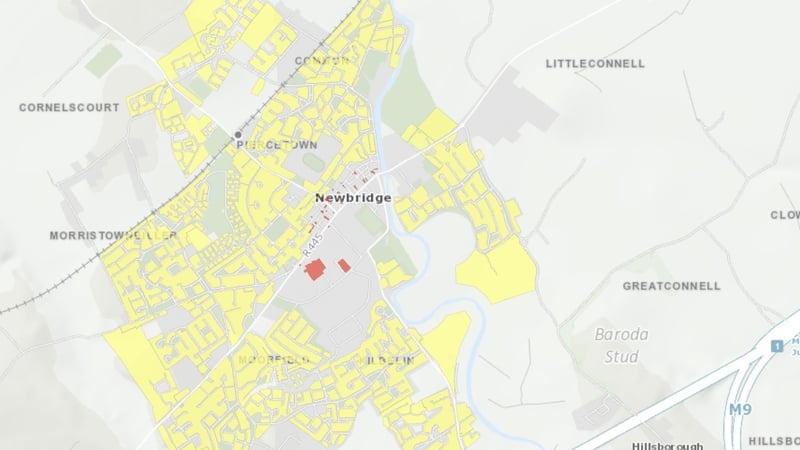Analysis: all you need to know about the new tax which aims to incentivise landowners of unused land zoned and serviced for housing
The Residential Zoned Land Tax (RZLT) was announced in Budget 2022 and introduced by the Finance Act 2021. According to Government, it is estimated that only one-sixth of residential zoned land is activated for housing during a local authority's six-year Development Plan. Given this, the objective of the new land tax is to increase housing supply by activating zoned, serviced residential development lands for housing. Here's how the tax has been designed - and how it will work
What land will the new tax apply to?
The RZLT will apply to land that on or after January 1st 2022, is zoned for residential use (or for a mixture of uses including residential) and serviced to support residential development. Residential properties liable for Local Property Tax (LPT) are not subject to this tax, but you must register for RZLT if your dwelling has a garden or yard that is greater than 0.4047 hectares (one acre), though no RZLT is payable by owners of these properties.
We need your consent to load this rte-player contentWe use rte-player to manage extra content that can set cookies on your device and collect data about your activity. Please review their details and accept them to load the content.Manage Preferences
From RTÉ Radio 1's Drivetime, Social Democrats' housing spokesperon Cian O Callaghan and Fianna Fáil senator discuss why residential building has slowed by 16% in Q3 of this year
A site which is designated as a derelict site and subject to the Derelict Sites Levy is also excluded. RZLT may be deferred in certain circumstances. These include where you begin residential development of the land and if your appeal against the inclusion of your land on a local authority map is ongoing.
Who is liable to pay the tax - and how much will they pay?
Owners of land that is zoned for residential use and serviced are liable for RZLT. Such landowners must file a return and pay any RZLT due for 2024 by May 2024. RZLT is an annual tax and will be administered and collected by Revenue.
In general, an owner is the registered owner under the Registration of Title Act 1964, but also includes a person whose interest in the land allows them to develop the land. If a site has more than one owner, there is a process whereby one of the owners is designated as the liable person who then fulfils the various tax obligations in relation to that site. Liability will cease once development is completed or the zoning of the land changes, such that it is no longer zoned as suitable for residential development.
A sign of the tax's success will be diminishing revenues over time as fewer sites remain undeveloped and subject to the RZLT.
Where land becomes both zoned and serviced, tax will be chargeable in the third year after the year in which it comes within the scope of the tax. For example, if the date on the map states June 1st 2022, then the tax will be chargeable in 2025. The rate is 3% of the land’s market value on the valuation date, with the first valuation date being February 1st 2024. The land will be required to be revalued every three years from the initial valuation date.
Who will assess this amount?
RZLT will be self-assessed by the landowner. If you own land liable to RZLT, you must register for the tax. You will be able to register for RZLT from late 2023. You must make an annual return to Revenue and pay any liability by May of each year, beginning in 2024.
Land that is liable for RZLT will be shown on a map prepared by the relevant local authority. Draft RZLT maps were published by local authorities on November 1st 2022. You can view the draft maps on your local authority website or in your local authority’s public offices. Draft maps will be updated, and supplemental maps will be published by May 2023. The final map of land that is liable for the new tax will be published no later than December 2023, indicating what lands are subject to the new tax. Local authorities will update these maps annually from 2025 onwards to reflect changes in the zoning and servicing status of land.
You can make a submission to the local authority challenging the inclusion of lands in the draft map on the basis that these lands do not meet the criteria set out in legislation. Appeals of local authority decisions can be made to An Bord Pleanála. Interest, penalties and surcharges will apply, as appropriate, in cases of non-compliance with the tax, including undervaluations and late filing of returns.
What happens next?
Landowners have until January 1st 2023 to make submissions to the relevant local authority if they wish to dispute the inclusion of their land on the draft RZLT map. They can submit amendments to the map if they feel that the land included on the map does not meet the criteria or request a change of zoning of their land so that it is not subject to the tax.
The timeline and process for the RZLT is available here from the Department of Housing, Local Government and Heritage. The phased-in RZLT will replace the current Vacant Site Levy, and it is anticipated that it will become part of the normal business of Revenue and of landowners. Ironically for a tax, a sign of its success will be diminishing revenues over time as fewer sites remain undeveloped and subject to the RZLT.
The views expressed here are those of the author and do not represent or reflect the views of RTÉ






